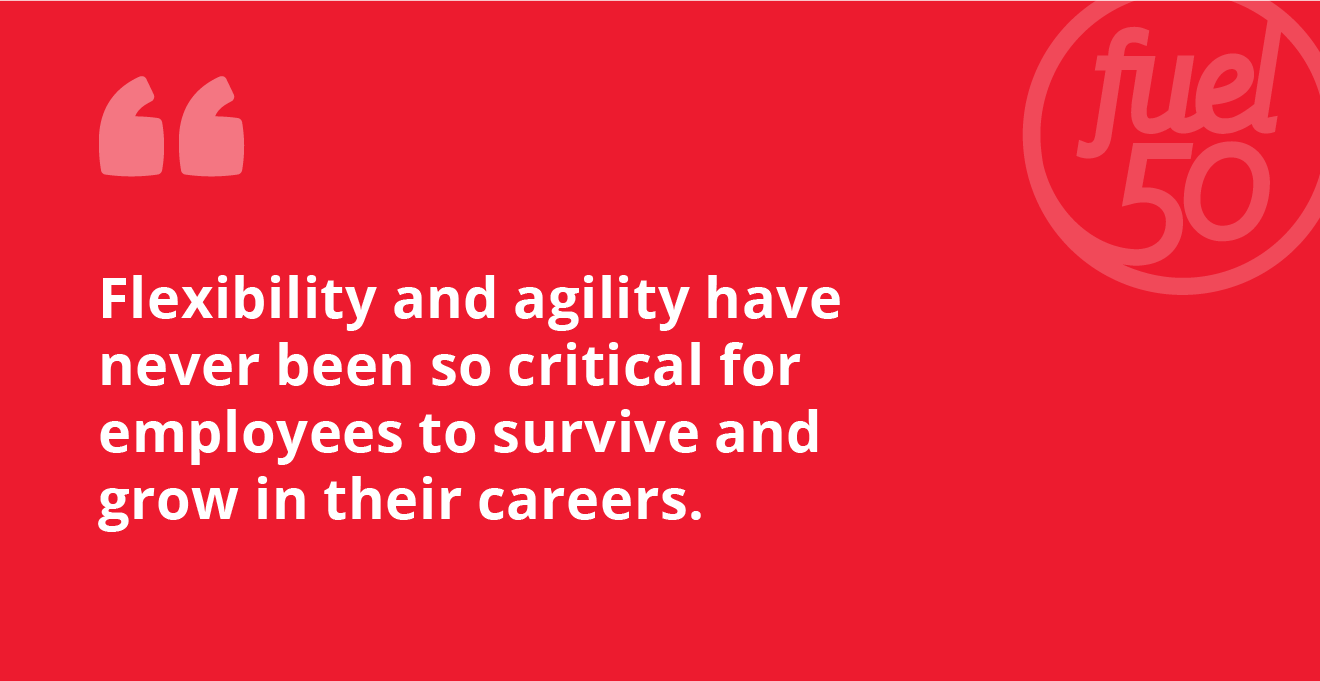Originally published on Forbes. Written by Anne Fulton, CEO and Founder of Fuel50.
The world of work has endured immense change in the last five years. The pandemic turned the world upside down, forcing organizations to find new and alternative ways of working. These shifts have brought about the need for a talent revolution.
We’ve entered an era where a humanistic approach to talent is not just needed but inherently critical. Traditional talent processes that put people into boxes served the purposes of the last decade, but we have reached a point where we must rethink how we engage with our people.
What we need now is a talent revolution, a movement that supports the emancipation of talent to foster agility, empowerment, and enablement.
Why a Talent Revolution Is Needed More Than Ever
Given the significant change the world has gone through in such a short period, there is much more openness to change now than there has been in the past. Organizations have become more resilient in the face of change.
Why? Because their people have adapted and evolved to navigate the new landscape. Flexibility and agility have never been so critical for employees to survive and grow in their careers.
As more change is upon us, there is a clear need for people to learn and reskill to keep up with the growing demands of this new world of work. HR practices and strategic priorities must be better than they were in the last decade.
They must be more human-centric, intelligent, and robust in their skills and capability matching, more learning and growth-oriented, and better able to deliver the talent optimization that organizations will need in the coming decade.

The Five R’s Driving the Talent Revolution
In my research for The Talent Revolution book, I came across many writers and thinkers who shared the same views about the need for revolution. They enumerated five factors that are driving this:
1. Reengineering
The need to rebuild the workplace has been accelerating as a response to market changes and the need to foster more growth.
Reeingeering the workplace challenges companies to step back and examine the philosophy, culture, and strategy the organization is built upon and determine whether it will drive positive change moving ahead.
2. Reskilling
Reskilling your workforce is now a global imperative to keep your people updated with critical skills. Fuel50 research found that a whopping 81% of employees feel their skills aren’t being fully utilized at work.
Employees today have shown their desire to learn, grow, and explore new roles. It’s now up to organizations to encourage and facilitate these opportunities.
3. Robotics
In its early adoption, many feared that AI may replace jobs. While these fears are understandable, we must alter our perspectives and leverage AI’s potential.
AI can help us do our jobs better, faster, and more accurately. As AI becomes widely adopted, we must remember that technology has its strengths, and humans have theirs.
At this stage, AI cannot replace all human capabilities. To move forward, we must have a healthy synergy between the two.
4. Reconstruction
Instead of restructuring, think reconstructing. Restructuring often has a negative connotation associated with layoffs and overwhelming change. In these cases, effective communication is key.
If you’re considering any kind of workplace reconstruction to become more strategic or purpose-aligned or employee role restructuring, you better communicate now.
5. Reformation
Reformation is all about encouraging a more powerful employee voice. When employees feel they can speak up about workplace issues, they are much more successful at their jobs. This means employees are more likely to voice their opinions, working as an early warning device for leaders to know which critical issues need attending to.
The Time Is Ripe for Revolution
With these 5 R’s driving momentum, the time is ripe for a talent revolution. An organization is nothing without its people, so it’s time we listen to them, understand their needs, and evolve to create a workplace built on human-centricity.







